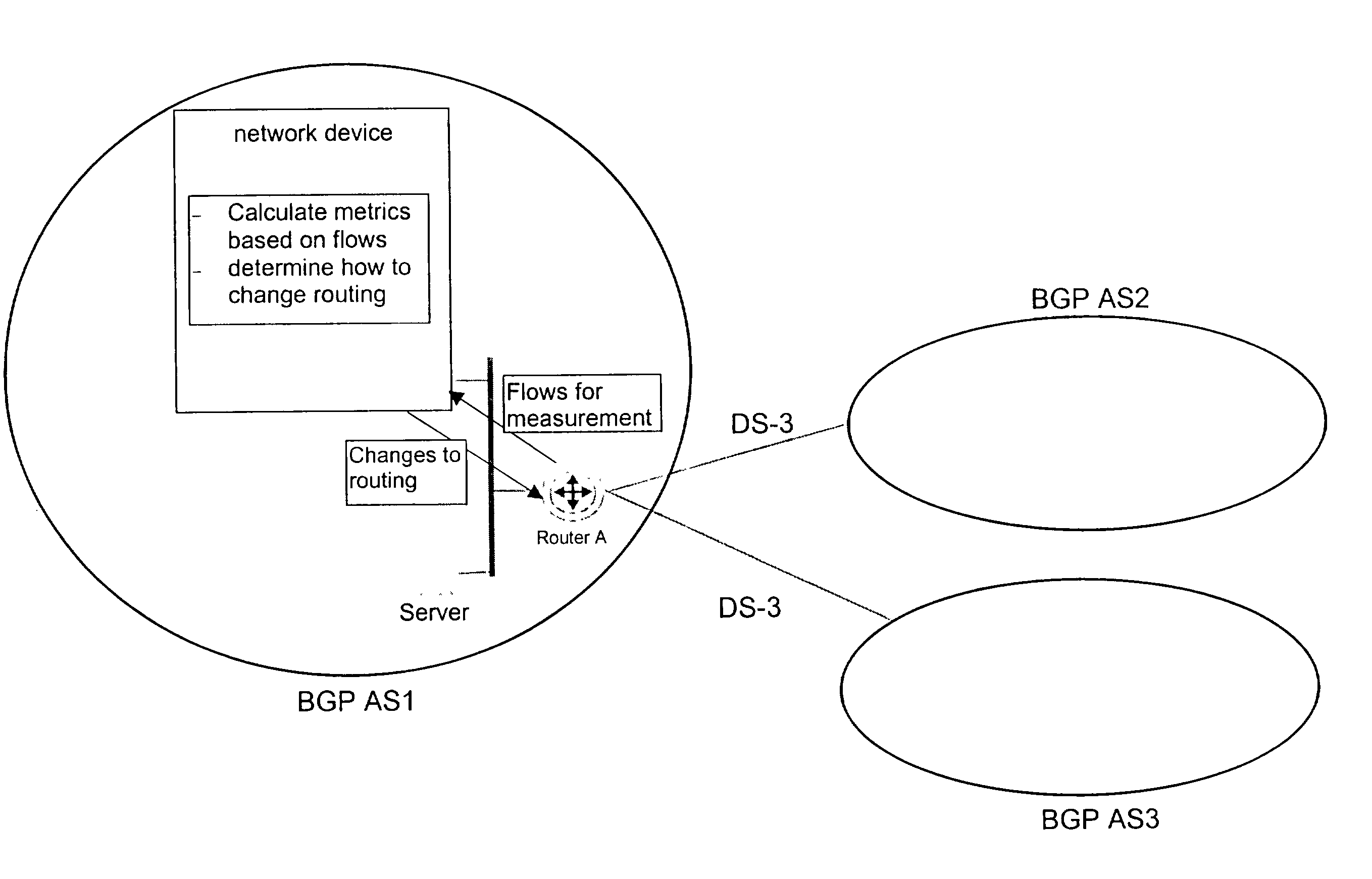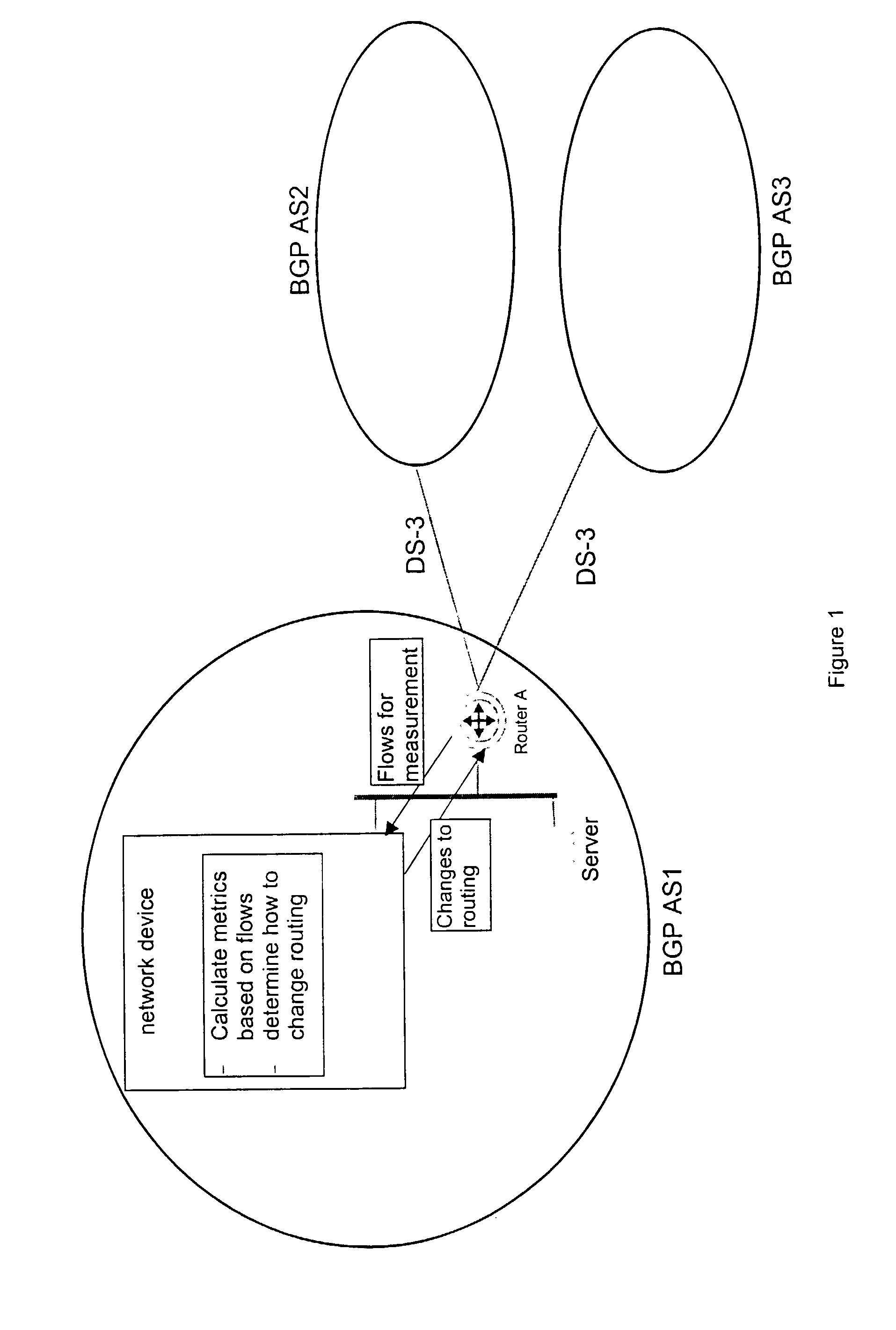Method and apparatus for the assessment and optimization of network traffic
a network traffic and optimization technology, applied in the field of network traffic optimization, can solve the problems of insufficient flexibility of manual configuration forwarding tables, significant impact on scarce skilled resources, and insufficient effect of compensating for network performance variations
- Summary
- Abstract
- Description
- Claims
- Application Information
AI Technical Summary
Problems solved by technology
Method used
Image
Examples
Embodiment Construction
will Differ in the Details of their Group Definitions, Depending on the Range of IP Addresses that are Deemed "Equivalent".
[0132] Application of Groups to Routing Tables
[0133] In some embodiments of this invention, it may be desirable to enfore a direct 1:1 mapping between Group Definition and a Reference Routing Table.
[0134] In some embodiments of this invention, the Reference Routing Table may be obtained from within the local Autonomous System.
[0135] In some embodiments of this invention, the Reference Routing Table may be obtained from outside the local Autonomous System.
[0136] In some embodiments of this invention, it may be desirable to allow Groups to refer to exactly one or more entries of the Reference Routing Table.
[0137] In some embodiments of this invention, it may be desirable to allow Groups to refer to one or of the entries in the Reference Routing Table, in addition to one or more individual addresses, each of which may, or may not, be explicitly included in the Refe...
PUM
 Login to View More
Login to View More Abstract
Description
Claims
Application Information
 Login to View More
Login to View More - R&D
- Intellectual Property
- Life Sciences
- Materials
- Tech Scout
- Unparalleled Data Quality
- Higher Quality Content
- 60% Fewer Hallucinations
Browse by: Latest US Patents, China's latest patents, Technical Efficacy Thesaurus, Application Domain, Technology Topic, Popular Technical Reports.
© 2025 PatSnap. All rights reserved.Legal|Privacy policy|Modern Slavery Act Transparency Statement|Sitemap|About US| Contact US: help@patsnap.com



